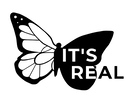Editor's Statement
Hey there,
I won’t try to weave some cliche about friction (it’s hard to move an object without it, etc.). But I will acknowledge its inevitability and necessity in art and the other aspects of our lives.
Tolstoy once wrote, “happy families are all alike; every unhappy family is unhappy in its own way.” But paradoxically, when it comes to art, this individuality implied in ‘unhappiness’ unifies us. Of course, associating unhappiness with friction is a somewhat flawed connection, but we’ll just assume that friction implies unhappiness.
But very frequently, it is in this tension(/friction/unhappiness) that we (at the risk of a cliche I’m trying to hard to avoid) find a reason to examine and create art. Of course, art can’t be grouped into “happy” and “unhappy” pieces, and neither can families. But with art, I almost always view profundity and friction as Siamese twins: inseparable and symbiotic. All of my poetry comes from friction, as mentioned in the March issue.
Per Frank Ocean’s words: “when you’re happy, you enjoy the music, but when you’re sad, you understand the lyrics.”
Does friction imply understanding? Not necessarily, but perhaps it heralds a sort of connection that artists (or at least I - I don’t want to speak for anyone else) have been trying to create since who knows when.
But I don’t feel like unnecessarily prolong this editor’s statement. As usual, a huge thanks goes to our readers, contributors, and staff. We sincerely enjoyed these pieces and we hope you do as well. Happy reading!
- Ana Chen, Founder and Editor-in-Chief
I won’t try to weave some cliche about friction (it’s hard to move an object without it, etc.). But I will acknowledge its inevitability and necessity in art and the other aspects of our lives.
Tolstoy once wrote, “happy families are all alike; every unhappy family is unhappy in its own way.” But paradoxically, when it comes to art, this individuality implied in ‘unhappiness’ unifies us. Of course, associating unhappiness with friction is a somewhat flawed connection, but we’ll just assume that friction implies unhappiness.
But very frequently, it is in this tension(/friction/unhappiness) that we (at the risk of a cliche I’m trying to hard to avoid) find a reason to examine and create art. Of course, art can’t be grouped into “happy” and “unhappy” pieces, and neither can families. But with art, I almost always view profundity and friction as Siamese twins: inseparable and symbiotic. All of my poetry comes from friction, as mentioned in the March issue.
Per Frank Ocean’s words: “when you’re happy, you enjoy the music, but when you’re sad, you understand the lyrics.”
Does friction imply understanding? Not necessarily, but perhaps it heralds a sort of connection that artists (or at least I - I don’t want to speak for anyone else) have been trying to create since who knows when.
But I don’t feel like unnecessarily prolong this editor’s statement. As usual, a huge thanks goes to our readers, contributors, and staff. We sincerely enjoyed these pieces and we hope you do as well. Happy reading!
- Ana Chen, Founder and Editor-in-Chief
